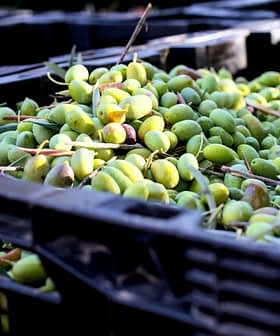Trump Delays Tariff Deadline on EU Imports

President Trump delayed imposing a 50 percent tariff on E.U. imports until July 9th to allow for trade deal negotiations, citing trade barriers and taxes as reasons for the tariff increase. The E.U. is considering retaliatory tariffs on U.S. goods, with both sides at an impasse in negotiations, while European olive oil exporters are exploring other markets due to the potential impact of the tariffs on their exports to the U.S.
After threatening to impose a 50 percent tariff on all European Union imports from June 1st, United States President Donald J. Trump agreed to delay the deadline until July 9th to give more time for negotiations on a trade deal with the 27-member bloc.
Currently, E.U. exports to the U.S., including table olives and olive oil, face a ten percent tariff, down from the original 20 percent tariff announced on April 2nd.
Trump cited trade barriers, Value Added Tax (VAT), corporate taxes and European litigation against U.S. companies as the reasons for more than doubling the originally proposed tariff rate.
See Also:Spain Moves to Mitigate Impacts of New U.S. TariffsEuropean and U.S. officials have acknowledged that the negotiations are currently at an impasse, with both sides adhering to their long-held positions.
If the U.S. were to follow through on its tariff plan, European officials are considering whether to retaliate.
Member states have already voted to approve a 50 percent tariff on €21 billion on some U.S. goods, and the European Commission is also consulting on an additional list of goods valued at €95 billion.
Trump’s announcement came days after the International Olive Council said U.S. olive oil imports had increased by seven percent in the first seven months of the 2024/25 crop year, including a 34 percent increase in February 2025 compared to February 2024.
IOC data show the U.S. imported 99,033 metric tons of olive oil since October, valued at €787 million.
According to the IOC, the E.U. is the leading exporter of olive oil to the U.S., shipping an average of 252,000 tons annually, which represents more than 90 percent of U.S. olive oil imports.
Overall, the U.S. is Europe’s largest trading partner, accounting for more than 20 percent of goods exported, with a value of €530 billion in 2024.
While many European exporters managed to ship the 2024/25 harvest to the U.S. ahead of the tariffs being announced in April, they are increasingly looking at other markets.
“For the next harvest, we’ll be ready to export to Canada, Germany and South Korea if we cannot bring the product into the U.S. in decent conditions,” said Marie-Charlotte Piro, the co-owner of Tuscany-based Olio Piro.
“Small producers like us cannot be counted on to absorb all the tariff, and we cannot count on small retailers like our wholesale partners to absorb it,” she added.
However, the well-developed and highly familiar U.S. market, which represents 37 percent of global olive oil imports, will be difficult to replace.
For comparison, Asia’s largest and wealthiest countries, including China, India, Japan and South Korea, imported less than one-third the amount of olive oil by value as Spain, Italy and Greece exported to the U.S. in 2023.
The potential for new trade barriers comes as the IOC also found that the value of E.U. olive oil exports has fallen significantly, dropping to €647 per 100 kilograms in February 2025, a 32 percent decrease compared to the previous year and 7.5 percent lower than in January.
Lower export prices are largely due to harvest rebounds across the Mediterranean, including Spain, Turkey and Tunisia. According to the IOC, E.U. olive oil exports by volume increased by 21 percent in February 2025 compared to February 2024 and by 12 percent compared to the previous month.







